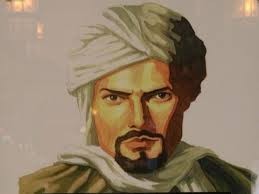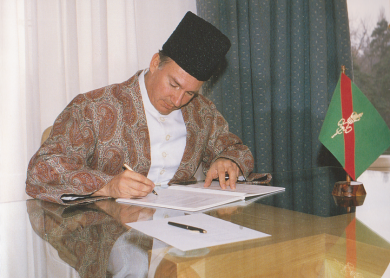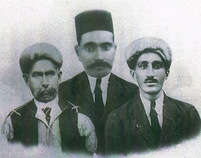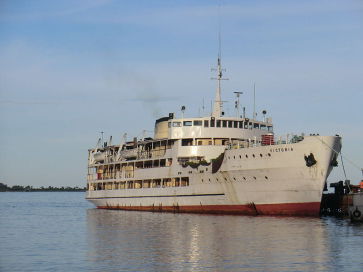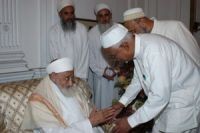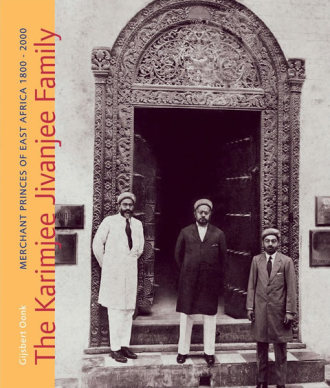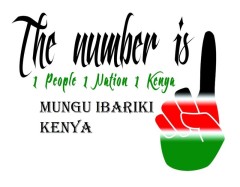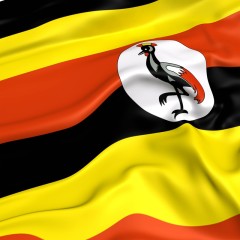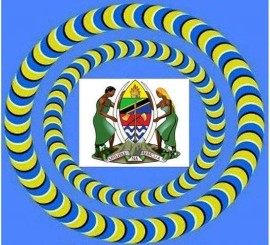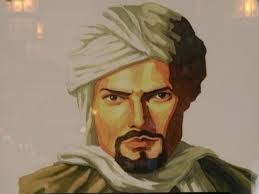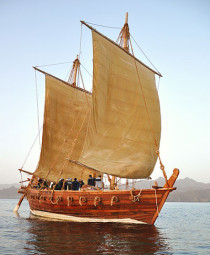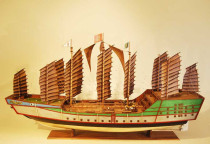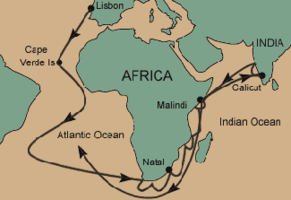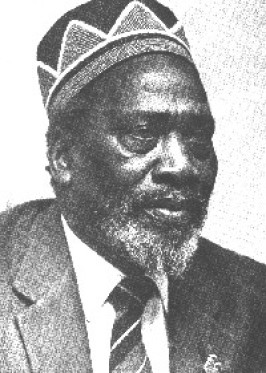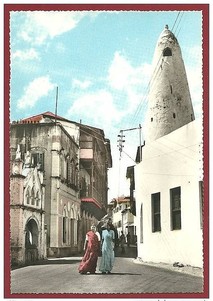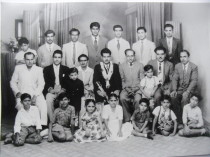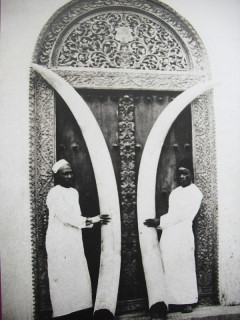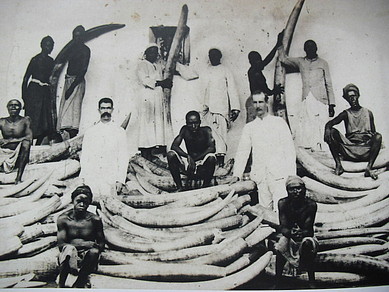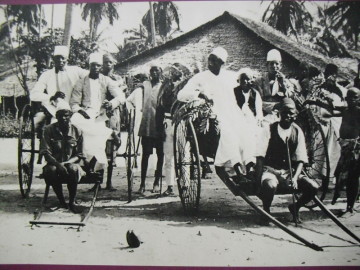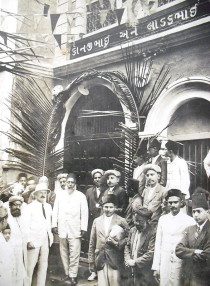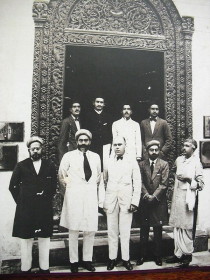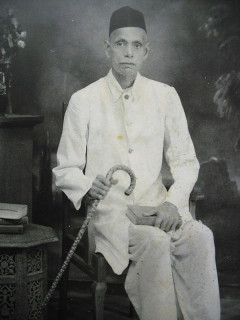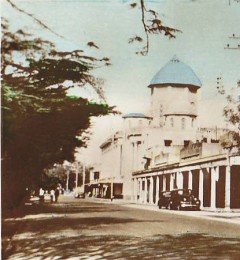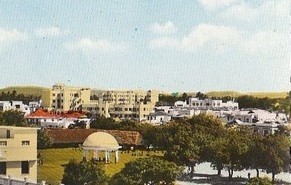Muslims
Nordic Journal of African Studies 3(1): 88–98 (1994)
Muslims in Eastern Africa -
Their Past and Present
*
ABDULAZIZ Y. LODHI
Uppsala University, Sweden
1. EARLY H ISTORY
The earliest concrete evidence of Islam and Muslims in eastern Africa is a mosque
foundation in Lamu where gold, silver and copper coins dated AD 830 were found
during an excavation in 1984. The oldest intact building in eastern Africa is a
functioning mosque at Kizimkazi in southern Zanzibar Island dated AD 1007.
It appears that Islam was common in the Indian Ocean by AD 1300. When Ibn
Batuta of Morocco visited the East African coastlands in 1332, all the way down
to the present border between Mozambique and South Africa, most of the coastal
settlements were Muslim, and Arabic was the common literary and commercial
language spoken all over the Indian Ocean - Batuta worked as a Kadhi, Supreme
Muslim Jurist, in the Maldive Islands for one year using Arabic as his working
language.Islam thus seems to have arrived quite early to East Africa through traders.
It certainly did not spread through conquest or settlement, but remained an urban
and coastal phenomenon for quite long. Later it spread to the interior after 1729 when the Portuguise were pushed beyond the Ruvuma River that forms the present Tanzania-Mozambique border. It would be erroneous to consider Islamic practices in eastern Africa as Arabic practices, and associate Islam with Arabs, since Islam did not arabise East Africans; on the contrary, Arab immigrants, Islam and Islamic practices got africanised or swahilised, thereby developing Islam as an indigenous African
religion!
This is also linguistically evidenced by the fact that Arab immigrants became Swahili speaking, adopted the Swahili dress, food and eating habits and other cultural elments. Islam is therefore not a foreign but rather a local religion on the coast, and
along the old trade/caravan routes. It is more of an urban religion also in the interior (as in Tabora, Morogoro, Moshi) and inland ports (Kigoma, Ujiji Mwanza) of Tanzania and the rest of East Africa.
Cont: http://www.njas.helsinki.fi/pdf-files/vol3num1/lodhi.pdf
The Ismailis
"The Ismailis constitute the second largest Shia community after the Twelvers in the Muslim world and are now scattered in more than twenty countries of Asia, Africa, Europe and America. This book traces the history and doctrines of the Ismaili movement from its origins to the present time, a period of approximately twelve centuries."
"The origins of Sunnism and Shiism, the two main divisions of Islam, may be traced to the crisis of succession faced by the nascent Muslim community following the death of the Prophet Muhammad, though the doctrinal bases of these divisions developed gradually in the course of several centuries.
In time, Shia Islam, the minoritarian view, became subdivided into different groups, many of which proved short-lived. But Imami Shiism, providing the common early heritage for several Shia sects, notably the Twelvers and the Ismailis, was a major exception."
"The Ismailis have had a long and eventful history. In mediaeval times, they twice established states of their own and played important parts for relatively long periods on the historical stage of the Muslim world. During the second century of their history, the Ismailis founded the first Shia caliphate under the Fatimid caliph-imams.
They also made important contributions to Islamic thought and culture during the Fatimid period. Later, after a schism that split Ismailism into two major Nizari and Mustalian branches, the Nizari leaders succeeded in founding a cohesive state, with numerous mountain strongholds and scattered territories stretching from eastern Persia to Syria. The Nizari state collapsed only under the onslaught of all-conquering Mongols.
Thereafter, the Ismailis never regained any political prominence and survived in many lands as a minor Shia Muslim sect. By the second half of the eighteenth century, however, the spiritual leaders or imams of the Nizari majority came out of their obscurity and actively participated in certain political events in Persia and, then, in British India; later they acquired international prominence under their hereditary title of Agha Khan (Aga Khan)."
Cont: http://www.akdn.org/about_community.asp
Welcome to The Heritage Web Site
http://www.ismaili.net/Source/earlycol.html
The Ismailis in the Middle Ages
http://www1.utm.utoronto.ca/shafiquevirani/ima/?gclid=CNOz7pGQyZcCFQGHHgodin0vTg
A True Account of How Three Ismaili “Shahids” Lost Their Lives in a Tragic Accident in 1925 Near Kilosa, Tanganyika
The History of the Khojas....Click below
The Dawoodi Bohra Community
Click On Photo
The Dawoodi Bohra Community
Introduction
-------------------------------------------------------------------------------------------
The Dawoodi Bohra community of Muslims led by His Holiness Dr. Syedna Mohammed Burhanuddin , is a
million strong, but scattered over five continents all over the world. Truly international in outlook, profession, skills and expertise, they bring their varied qualities to the community's pool of
resources and achieve significant success in their community ventures, no matter how large their scale. They traditionally practice trade and commerce, an occupational identity that they are known
by. Syedna's leadership provides them with guidance in the Islamic way of life as they endeavor to practice the faith with spirituality and conviction in an era of rapid change. They practice their
religion according to a specific code of beliefs, doctrines and tenets founded on al-Quran and Islamic Shariat as taught and interpreted by the Dai al-Mutlaq. This ensures the unity of faith among
the Dawoodi Bohras all over the world and binds the Community together as one entity preserving its identity.
Beliefs
----------------------------------------------------------------------------------------------------------------------------------------------------------------
The Shia Fatimi Ismaili Tayyibi Dawoodi Bohras are a denomination of Islam with a distinct identity, culture and ethos. In common with all Muslims, they affirm the oneness of Allah, believe that the
Prophet Muhammad al-Mustafa (s.a.w.) was the last prophet in a chain of prophets from Allah and revere the holy Qur'an, as the final revelation of Allah.
The Dawoodi Bohras in common with other Shia Muslims, believe that the Prophet chose his son-in-law Ali ibn Abi Talib (s.a.) as his successor and that an Imam descended from them both through the Prophet's daughter Fatima (s.a.) will always exists on earth as the final interpreter of religion and as a perfect guide to the faithful. The Imams functioned initially from Medina and then later from Egypt, where they led vast areas of the Muslim World as the Fatimid Caliphs. This era produced a unique tradition which is now called Fatimid. From the 21st Imam onwards, all Imams to date have chosen to remain in seclusion. It is an article of faith for the Bohras, that whilst the Imam chooses to remain in seclusion his mission is headed by his representative called al-Dai al-Mutlaq, meaning absolute caller to the faith. This office, first instituted in Yemen in the 12th century, moved to India in the 16th century and has remained there ever since. Since 1965, the office is held by His Holiness Syedna Mohammed Burhanuddin, its 52nd incumbent.
Roots
----------------------------------------------------------------------------------------------------------------------------------------------------------------
The Muslim community of Dawoodi Bohras traces its ancestry to early conversions to Ismaili Shiism during the reign of the Fatimid caliph-imam, al-Mustansir (AS) (AH 427-487/1036-1094 AD). When
schisms occurred in the Ismaili dawah (mission) in the eleventh and twelfth centuries in Egypt, the Ismailis in India followed the Fatimid Tayyibi dawah of Yemen. Subsequently, this
community split a number of times to form the Jafari Bohras, Dawoodi Bohras, Sulaymani Bohras, Aliyah Bohras and other lesser known groups.
The
meaning
----------------------------------------------------------------------------------------------------------------------------------------------------------------
The word Bohra (also spelled Bohora or Vohra ) is derived from the Gujrati vohorvu or vyavahar, meaning "to trade". This has sometimes caused Hindus, Jains and Muslims of trading communities other
than those related to the Tayyibi Ismailis to list themselves on census forms as Bohras. The early Hindu converts of the eleventh century comprised a single group of Ismaili
Bohras owing allegiance to the dai mutlaq in Yemen. The dai mutlaq operates as the sole representative of the secluded Ismaili imam and as such has had a great influence on the history, faith, and
practices of the Dawoodi Bohras. Dawoodi Bohras are named after their twenty seventh dai Dawood ibn Qutubshah (d. 1612).
Organization
----------------------------------------------------------------------------------------------------------------------------------------------------------------
The Dawoodi Bohra community has largely been molded into its present form by the two dais who have led the community in the twentieth century. The fifty first dai, the celebrated Dr. Sayyidna Tahir
Saifuddin (1915-1965), was an accomplished scholar, a prolific writer and poet, a capable organizer and a man of vision. During his period of fifty years he re-vitalized the community, fostered
strong faith, modernized the mission's organization, promoted welfare and education in the community, and guided it through the tumultuous period of world wars and independence of nations.The present
dai, H.H. Dr. Sayyidna Mohammed Burhanuddin (TUS) has continued his predecessor's endeavors with particular emphasis on strengthening the community's Islamic practices and on the promotion of its
Fatimid heritage.
The religious hierarchy of the Dawoodi Bohras is essentially Fatimid and is headed by the dai mutlaq who is appointed by his predecessor in office. The dai appoints two others to the subsidiary ranks of madhun (licentiate) and mukasir (executor). These positions are followed by the rank of shaykh and mullah, both of which are held by hundreds of Bohras. An Aamil (usually a graduate of the order's institution of higher learning, al-Jamiah al-Sayfiyah) who leads the local congregation in religious, social and communal affairs is sent to each town where a sizable population exists. Such towns normally have a mosque and an adjoining jamaat-khanah (assembly hall) where socio-religious functions are held. The local organizations which manage these properties and administer the social and religious activities of the local Bohras report directly to the central administration of the dai based in Bombay, called al-Dawah al-Hadiyah.
The Karimjee Jivanjee Family
Merchant Princes of East Africa
By Fatma Alloo | Courtesy: Pambazuk NewsMarch 18, 2013


